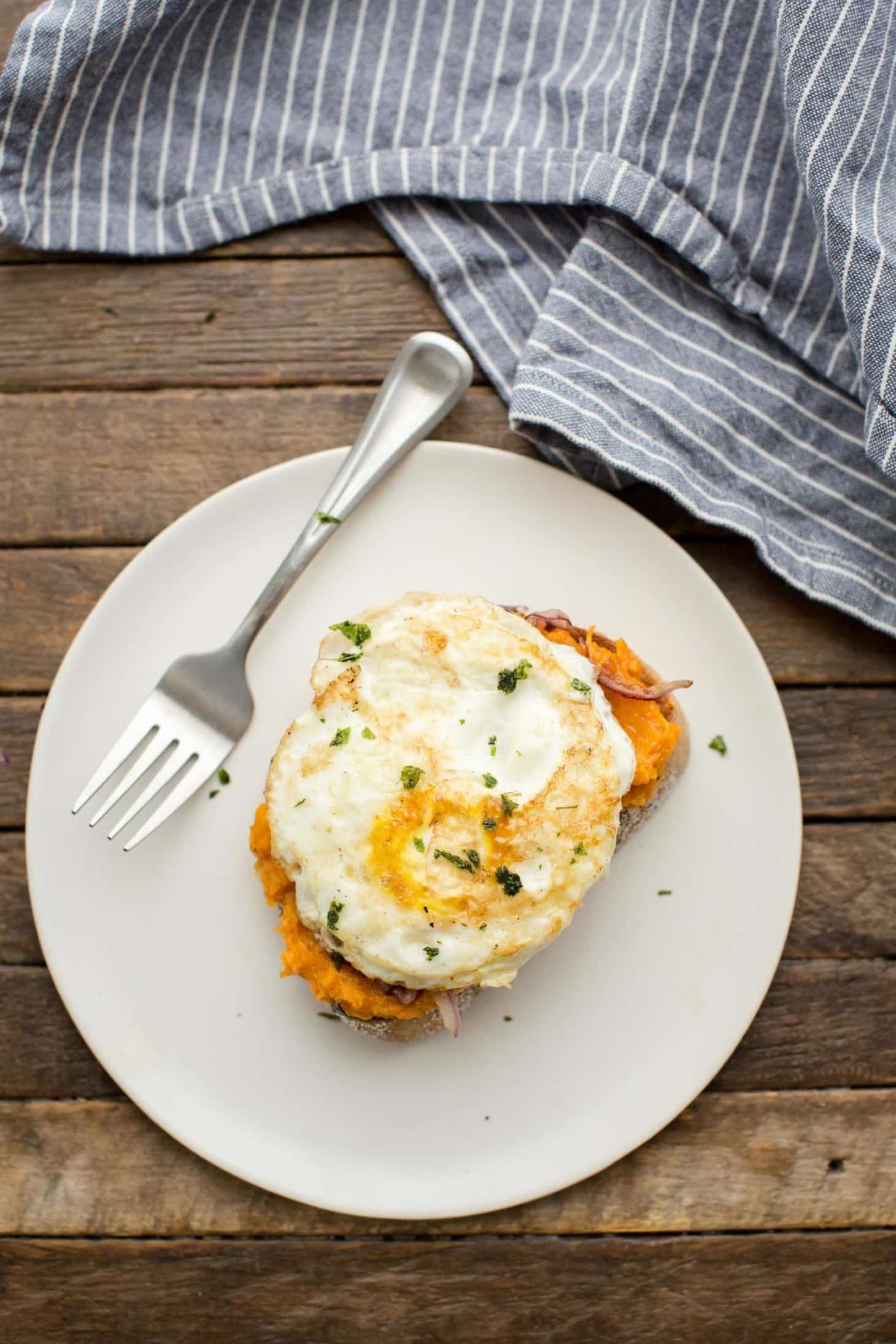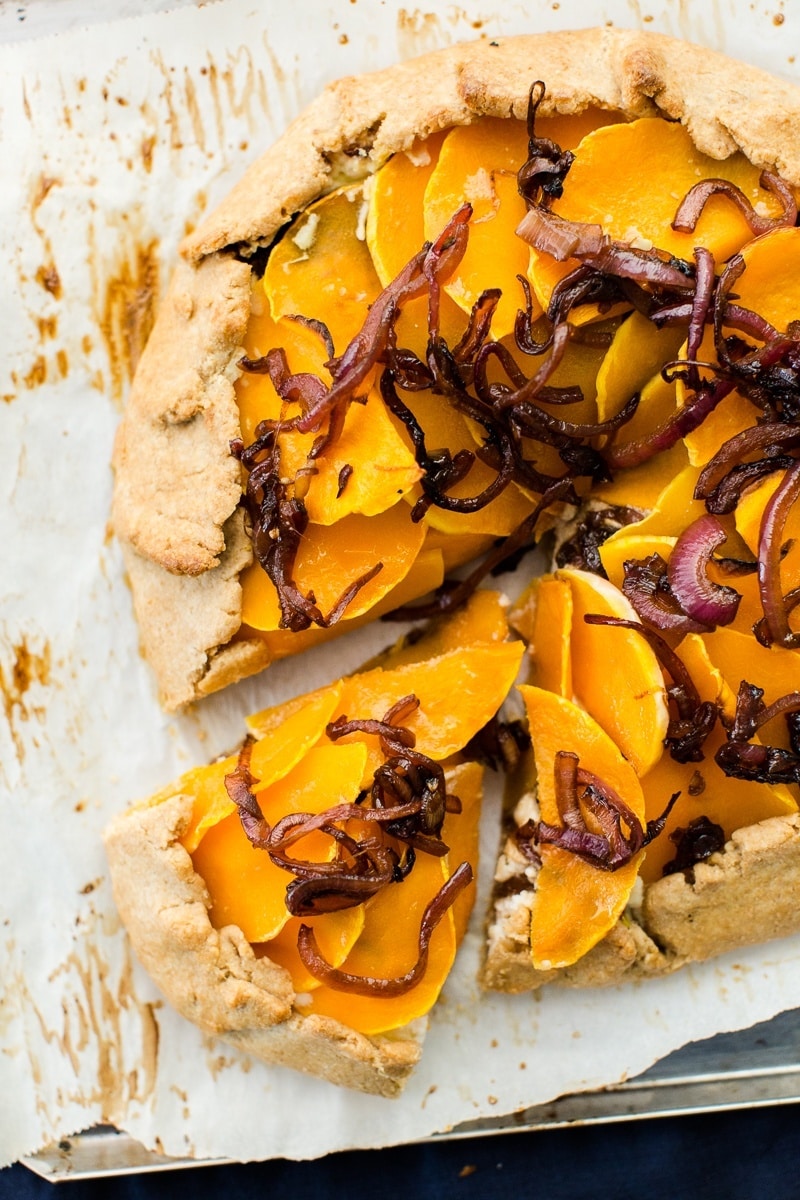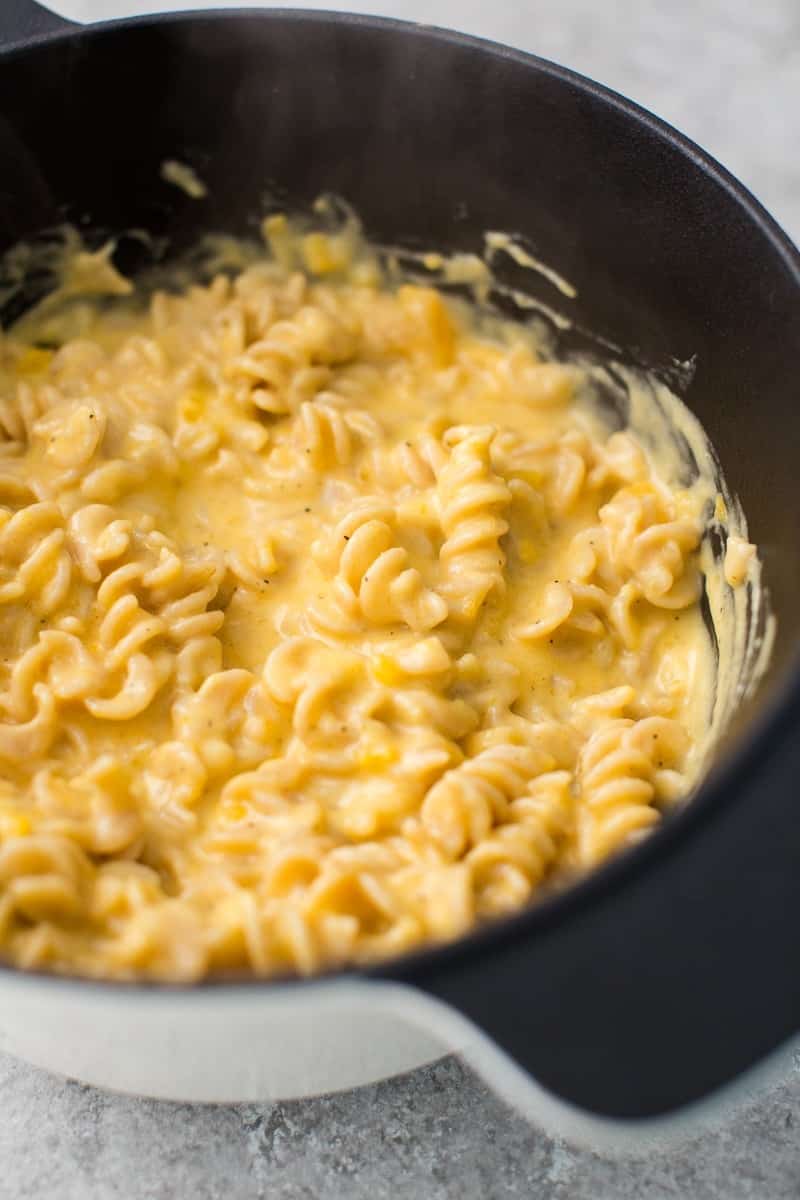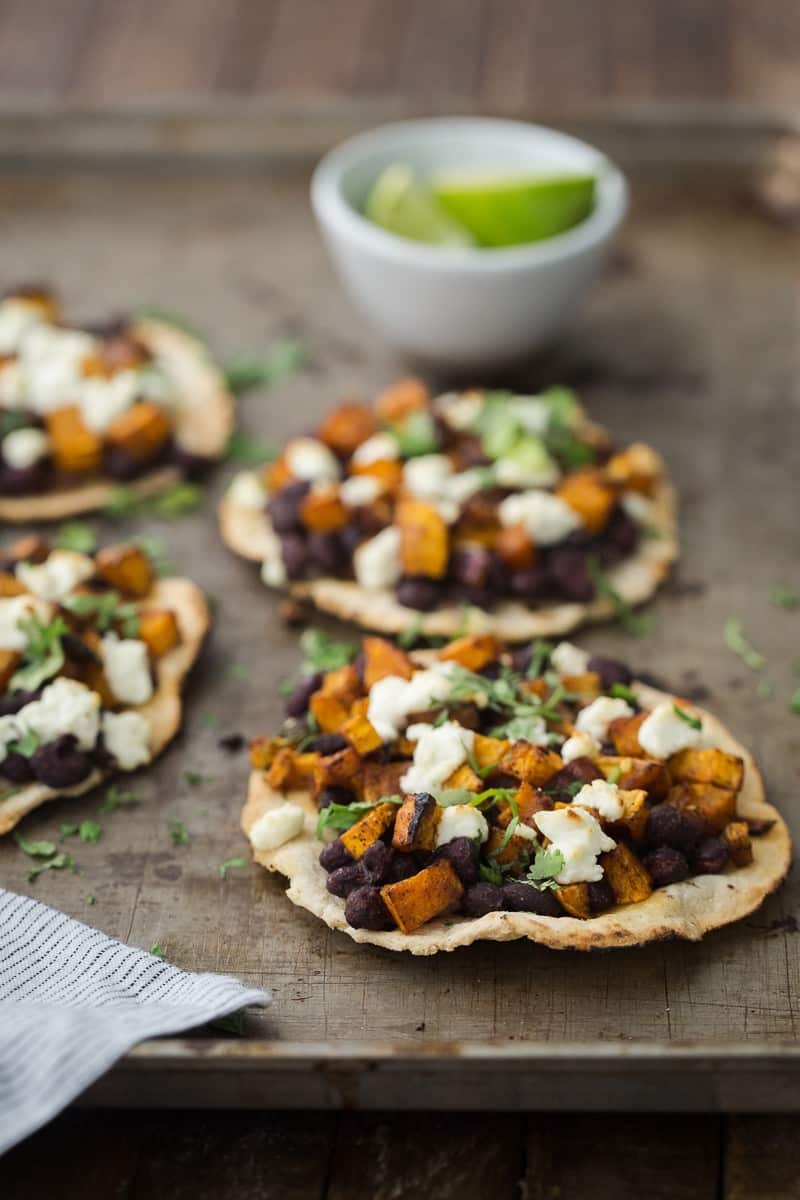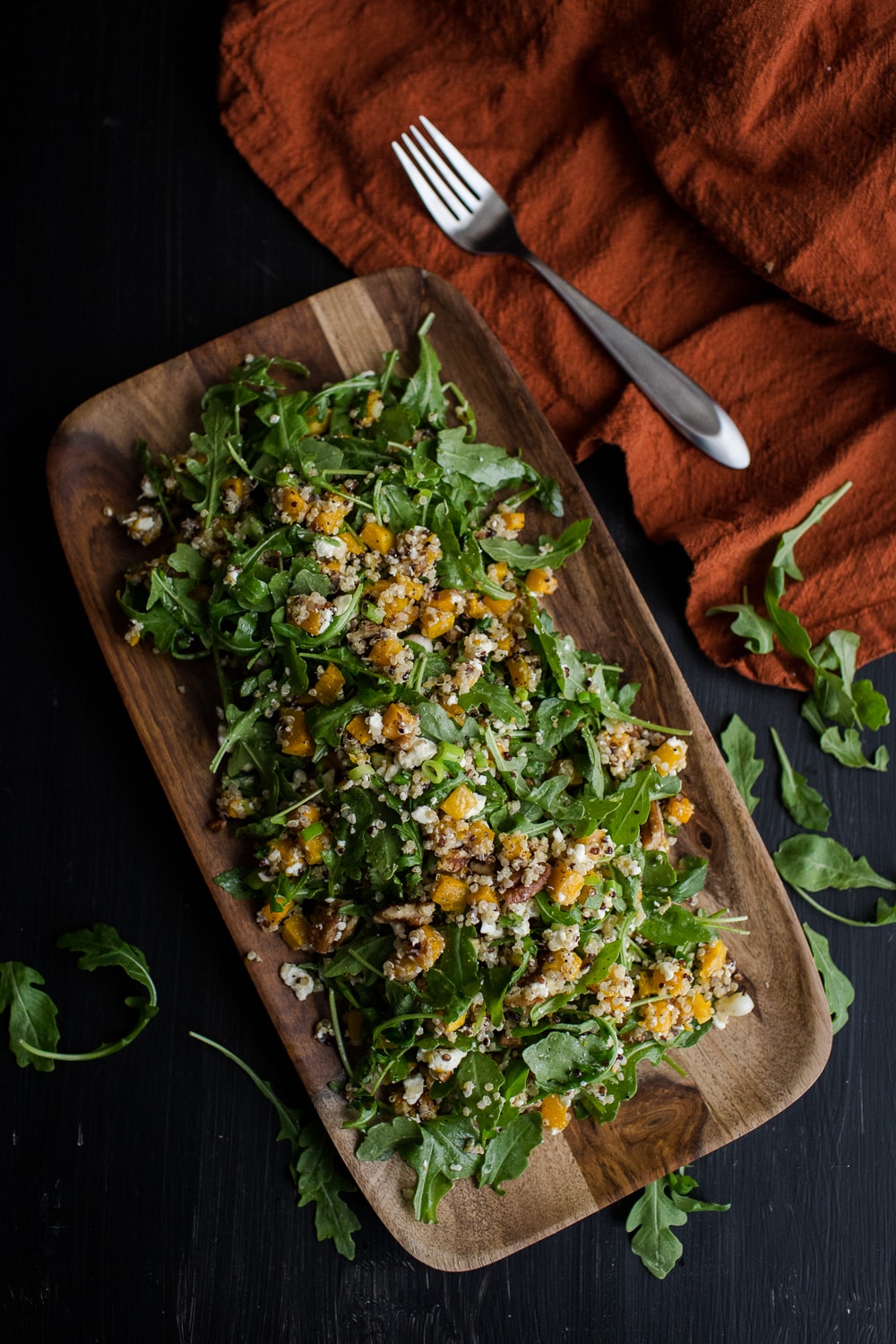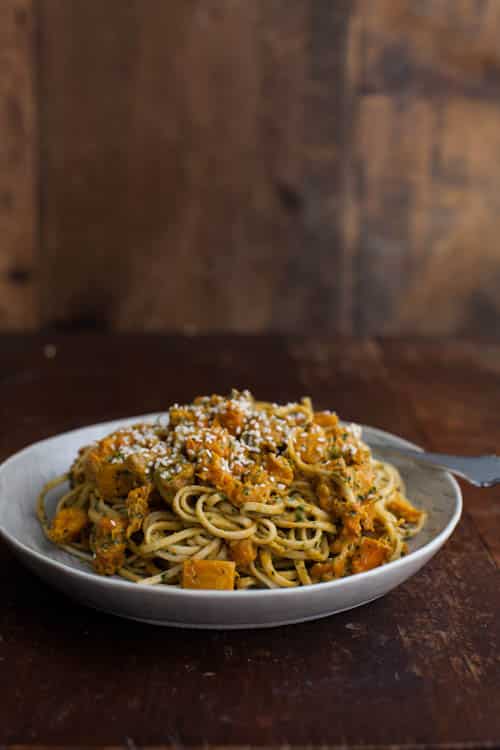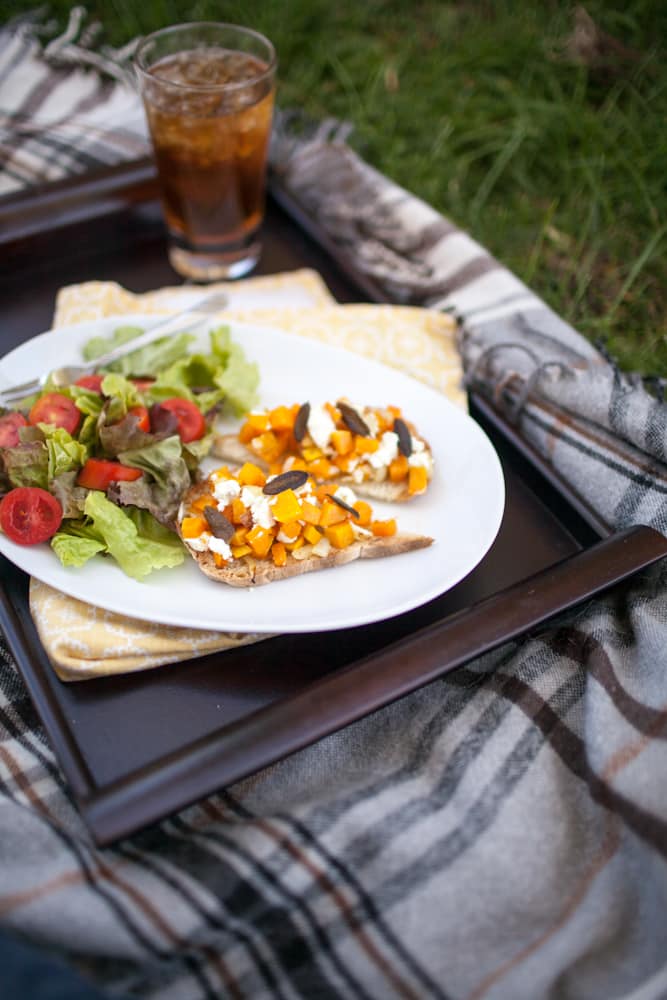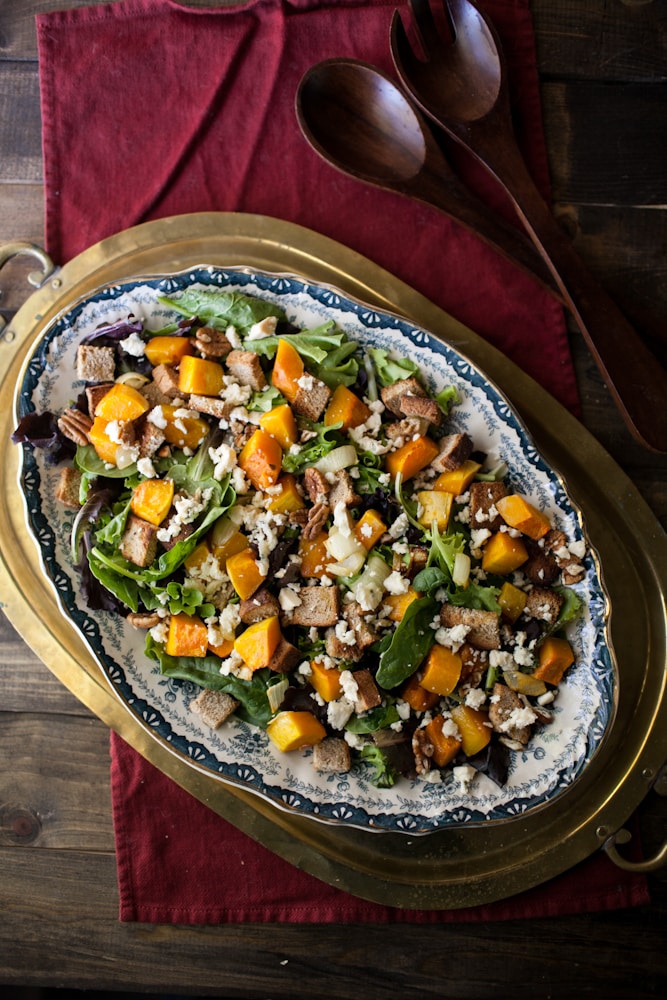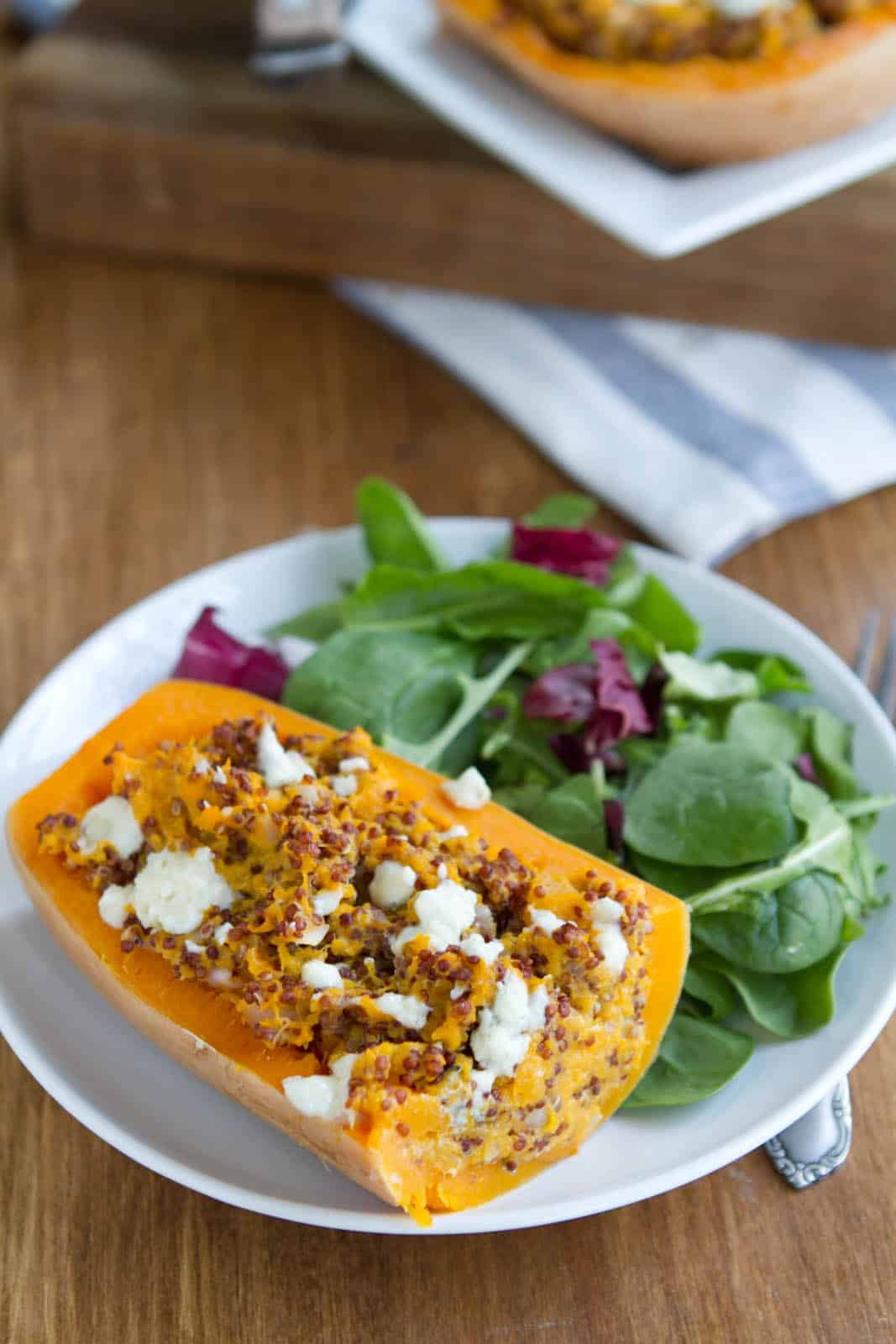
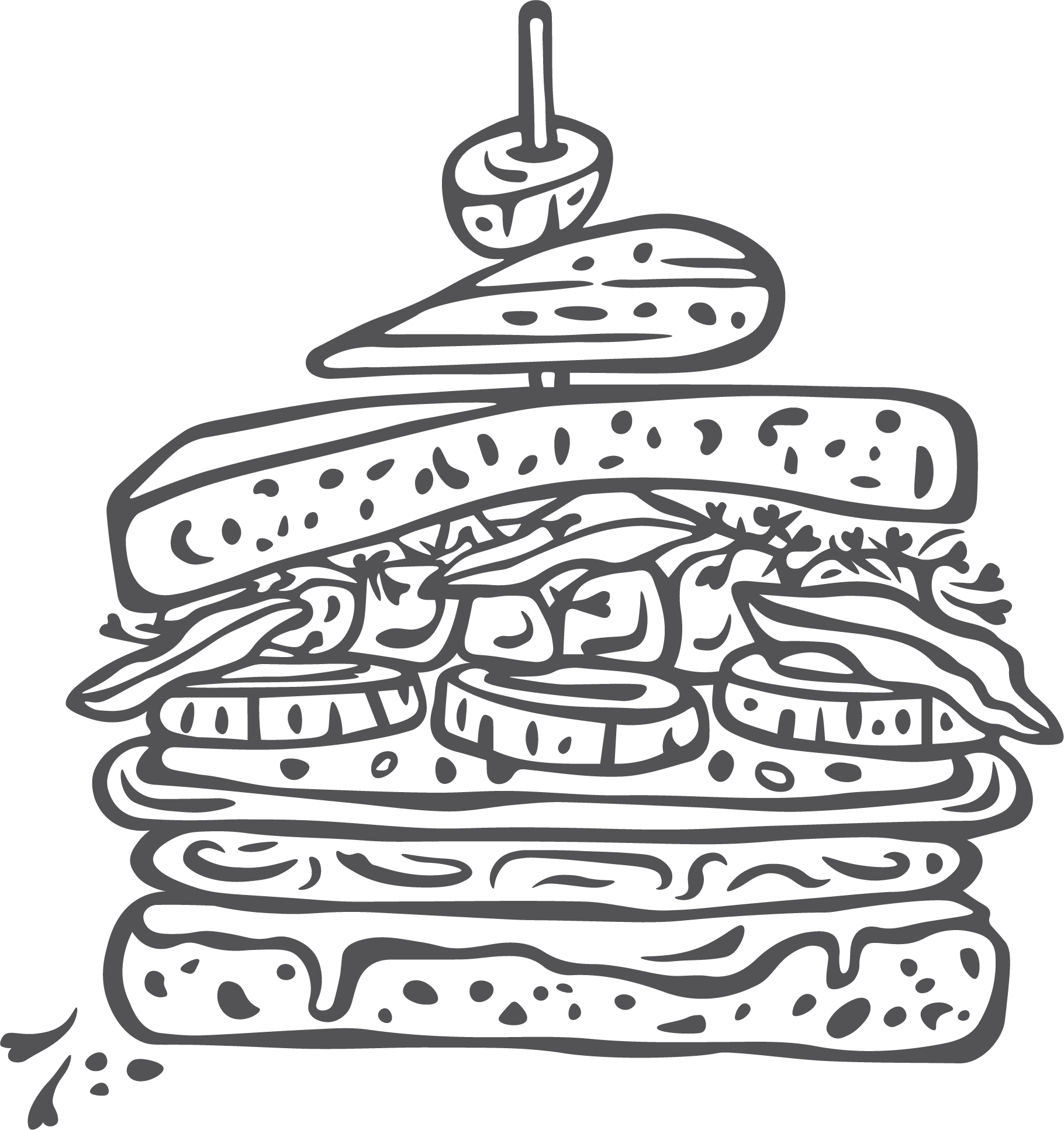
Butternut squash is one of the quintessential fall foods. It's perfectly sweet when roasted, adds flavor and creaminess to soups, and can be used in place of pumpkins in breads and muffins. The seeds and skin are both edible (the skin is less tough as it cooks longer). Fresh butternut squash can also be peeled easily with a good vegetable peeler. Some of my favorite butternut squash recipes use apples, caramelized onions, and goat cheese for complimentary flavor.
To tell if a butternut squash is ready to harvest, the skin should be tough and you shouldn't be able to press into the flesh with your fingernail. Squash should be stored in a cool, dry spot (similar to that of pumpkins and onions.) The butternut squash can be frozen in different stages. Roast or blanch peeled butternut squash and freeze in chunks or boil and puree to freeze for use in soups and other butternut squash recipes.

Fall/Winter
Butternut squash is versatile and can be cooked whole or peeled and cubed. Try roasting or steam-roasting whole squash. Peeled and cubed squash is great for roasting, steaming, or sautéing.
Look for squash that's firm to the touch with a dull finish on the skin. Marks on the squash are fine but avoid squash with holes in the exterior. The squash should also feel dense.
Store in a cool, dry place in your house (not your refrigerator) and the squash should last for two to three months (sometimes longer).
While there are a few different varieties of butternut squash, typically one kind (Waltham) is sold in stores. However, one of my favorites is the honeynut variety, which you can occasionally find at the farmers' market.
